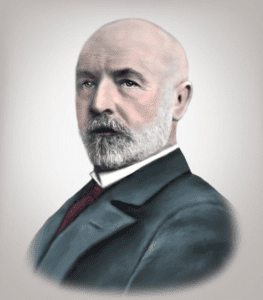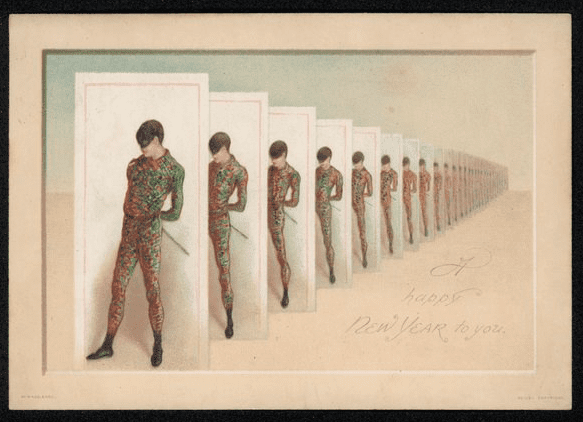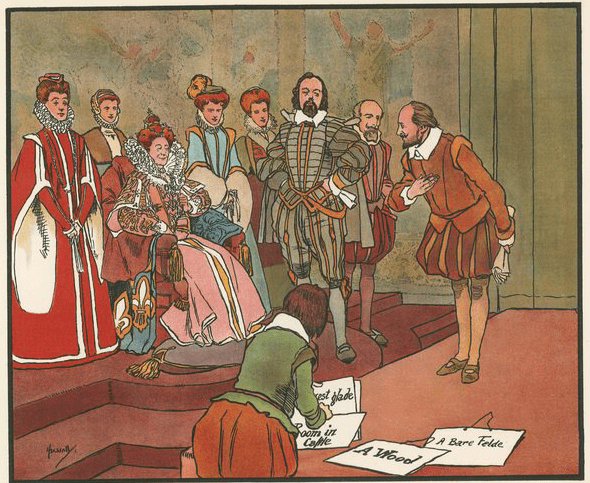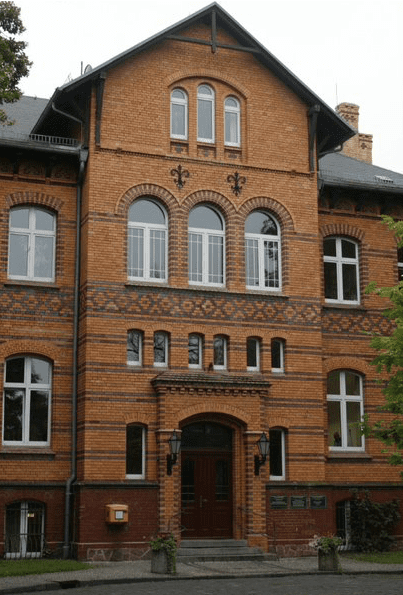Sylvia Karasu
New York, New York, United States
 |
|
Georg Cantor, German mathematician, 1845–1918. Cantor as an older man, date unknown. Cantor was not quite age 73 when he died of heart failure. Photo Credit: Colport/Alamy Stock Photo. Used with permission. |
There is a “fine line between brilliance and madness”: the distinction, for example, between a “revolutionary” mathematical theory and psychotic thinking may well have to do with what can be done with the theory, i.e., its “significant results.”1 “The mentally ill mathematician” is like the “knight errant, mortified saint, tortured artist and mad scientist” of preceding eras—a kind of “Prometheus—the one who goes to forbidden places and returns with gifts we can use but he alone pays for.”2 John Nash, portrayed in the book and film A Beautiful Mind,3 is one example, as is the lesser-known late nineteenth- and early twentieth-century German mathematician Georg Cantor, whose contributions on set theory and magnitudes of infinity were groundbreaking.4 “The mathematical theory of infinity may almost be said to begin with Cantor.”5
During much of his lifetime, though, Cantor aroused controversy and struggled to gain acceptance within the insular community of academic mathematicians. Philosopher and mathematician Henri Poincaré regarded Cantor’s set theory as un beau cas pathologique—”a perfect case of pathology.”6 Even his former mentor, University of Berlin Professor Leopold Kronecker, aggressively campaigned against Cantor’s theory of infinity,7 discouraged publication of his papers,8 and reportedly called him a “scientific charlatan.”9 Further, Cantor was never offered a coveted appointment to professorship at the University of Berlin, for which he held Kronecker responsible.10
Scholarship on Cantor is hindered not only by the loss, during World War II, of much of Cantor’s own extensive correspondence—of twenty letter-books, only three survived11—but also that primary sources about him require translation or remain in their original languages of German, French, and Russian. The result is that much information comes from secondary or even tertiary sources. “The popular account of Cantor’s life is richer in falsehood and distortion than in actual factual content,” says one of his biographers.12 Within the documents there are many inaccuracies and inconsistencies. Further, invariably biographies nearly always involve “flawed or impartial retrospective data,”13 and one must avoid viewing the past from the mathematical lens14 or even the psychological diagnostic lens of the present. For example, at least two of Cantor’s biographers were highly critical of a psychoanalytic interpretation (e.g., “ill-founded embellishments”)15 involving Cantor’s relationship with his father.16
 |
|
Row of cards with image of a masked man. New Year greeting card, English School, 20th century. Private Collection. This set seems to go on toward infinity. Copyright: Look and Learn/Valerie Jackson Harris Collection/Bridgeman Images. Used with permission. |
Cantor was the oldest of four siblings born in St. Petersburg, Russia, in 1845 to a Catholic mother and a Lutheran father. Among his relatives, there were several gifted musicians, including his mother; a cousin had been a famous law professor who had taught Tolstoy17 and fought for human rights for serfs.18 Cantor’s father, a successful businessman, was an intellectual, with a firm belief in God, who instilled in his son the importance and value of a comprehensive liberal arts education. Cantor’s father contracted tuberculosis and moved the family to Germany when Cantor was age eleven. Cantor had been quite attached to his father and throughout his life, he kept with him a letter—quite prescient—written by his father to him when he was about age fifteen: “Have an unshakable enduring faith in God . . . equip yourself with dignity for those struggles yet to come . . . in order to prevent all those hardships and difficulties which inevitably rise against us through jealousy and slander of open or secret enemies . . . God willing you will become a shining star on the horizon of science . . .” 19 Cantor’s father died of his tuberculosis in 1863 when Cantor was about age eighteen.
Early in his life, Cantor became intrigued by mathematics. He earned his doctorate in the theory of numbers in 1867 from the University of Berlin.20 Eventually he relocated to the University of Halle in eastern Germany, where he would remain his entire professional career. In 1874, he married a friend of his sister Sophie. He and his wife would have six children. His children described him as a loving father.21 Though there may have been inklings of melancholy, anxiety, and sleep difficulties in his early years,22 Cantor had his first (of several) depressive episodes in the summer of 1884, when he was around age thirty-nine. The episode came on suddenly, surprised the family, and necessitated a month’s admission to an asylum.23 The year before Cantor had published the Grundlagen, his milestone opus on transfinite numbers.24 While disagreements with his mentor Kronecker were hardly causative, Cantor himself attributed this breakdown to the impact his relationship with Kronecker had on him.25 His wife blamed his collapse on overwork.26
 |
|
Elizabeth I-William Shakespeare-Francis Bacon by English artist John Hassall (1868–1948). Illustration for Good Queen Bess (David Nutt, 1906). Private collection. Throughout most of his adult life, Cantor was convinced that Francis Bacon was the author of Shakespeare’s plays. He wrote pamphlets and gave lectures on the Bacon-Shakespeare connection, though he never provided convincing evidence. Copyright: Look and Learn/Bridgeman Images. Used with permission. |
After his hospitalization, Cantor spent more time pursuing literary and historical interests and became fascinated with Shakespearean dramas. He believed that Francis Bacon was the “true” author of Shakespeare’s plays:27 he collected first editions, wrote pamphlets, and lectured on his conviction throughout his life.28 His work on the Bacon-Shakespeare controversy occurred most often in the context of his depressions.29 Despite Cantor’s extensive knowledge and preoccupation, he provided no cogent evidence for his theory and made no contribution to Shakespearean scholarship.30, 31, 32
He continued, as well, his work on infinity. Unlike other mathematicians and philosophers throughout history who believed, like Gauss, that the “infinite was just a manner of speaking,”33 Cantor thought that it was fallacious to assume that infinite numbers must exhibit the same arithmetic characteristics as finite numbers:34 so-called paradoxes about infinity arose from “projecting the behavior of the finite onto the infinite.”35 For him the essence of math was its freedom to accept, create, and apply new ideas solely on the grounds of intellectual consistency.36
Further, he asserted that his set theory had been divinely inspired37 and revealed to him directly by God. He was merely a “reporter” or “messenger”38, 39 or even God’s “faithful secretary.”40 Though he did not attend any church, Cantor remained deeply religious throughout his life and actively corresponded with the Catholic clergy lest his views on infinity be taken as counter to Church doctrine. He even communicated directly with Pope Leo XIII (1878-1903), whose advocacy for science “should not be underestimated.”41,42
He emerged as a “modern day Galileo” in believing it was his duty to make the Church accept that man had been given the capacity to comprehend the universe.43,44 Understanding infinite sets was a “necessary condition” to appreciate the infinity of God,45 and unquestionably not a direct challenge to the “unique and absolute nature of God.”46
Cantor became so demoralized by the failure of his colleagues to accept his theory of the infinite that he turned increasingly to literature, metaphysics, and theology—subjects that “have laid siege to my soul”47 and asked to teach philosophy instead of mathematics.48 He never, though, abandoned his theoretical convictions,49 “which stood firm as a rock.”50
 |
|
Infinity Field, Lefkada Series, 1974, by American artist Theodoros Stamos (1922-97), Private Collection. Artists have been fascinated with the concept of infinity. Copyright: Christie’s Images/Bridgeman Images. Used with permission. |
Colleagues described Cantor’s mind as “imaginative” and “sparkling”51 but also “temperamental, explosive, and volatile.”52 He felt persecuted by a “conspiracy”53 of “German professors”54 and was “wary of his enemies” who were interested in “making him silent.”55 A subsequent hospitalization did not occur until 1899 but in the last two decades of his life, he had increasingly frequent and repeatedly prolonged admissions to the asylum in Halle and intermittently had to be removed from his teaching responsibilities. Cantor developed bizarre, delusional ideation, including believing he had uncovered information about the first king of England “which will not fail to terrify the English government as soon as the matter is published.”56 Furthermore, he published a pamphlet espousing Christ as the natural son of Joseph of Arimathea.57,58,59
Records from the Halle Nervenklinik include a note by Karl Pollit: “As a young assistant, I treated a prominent professor of mathematics (Cantor) who had to be admitted to the clinic because of recurrence of cyclic manic-depression.”60, 61, 62 With no medication or other treatments available then in Halle, Cantor apparently received nothing other than “captivity and solitude,”63 with the recommendation upon discharge to remain motionless for hours at home.64
It seems likely that Cantor suffered from what in today’s nomenclature would be bipolar illness, with discrete episodes of both hypomania and depression as well as psychotic symptomatology, including paranoid ideation, delusional thinking, and even possibly auditory hallucinations if his reports that God spoke to him directly with a “secret voice” are to be taken literally.65 Without more information, diagnosis must remain speculative. What is known is that he behaved “eccentrically” when he was invited to celebrate the 500th anniversary of St. Andrews University in Scotland in 1911, during which time he talked inappropriately and “at great length” about his Bacon-Shakespeare theories.66,67 Further, his letters to philosopher Bertrand Russell then were “undeniably erratic” in form and content. Though Russell referred to Cantor as “one of the greatest intellects of the 19th century,” he added rather gratuitously, “No one will be surprised that he spent a large part of his life in a lunatic asylum.”68
Cantor’s final year was a difficult one. He was again hospitalized in the Nervenklinik and made repeated appeals to his family to return home. Malnourished because of food shortages during World War I, he died in the hospital of cardiac failure in early January 1918.69 He was just shy of his seventy-third birthday.
Over time, Cantor garnered the awards and the recognition he had sought and had richly deserved. Once considered “heretical,” his mathematical views have become “mainstream.”70 Mathematician David Hilbert regarded Cantor as “the profoundest mathematician of our age”71 and Cantor’s contributions in mathematics are now considered of “lasting significance.”72 His set theory is described as “a landmark in human thought.”73 To many, though, Cantor’s “mathematical universe as a whole” was “hopelessly entangled” with his theological views.74 With his amalgam of madness and brilliance, though, Cantor was indeed a tormented Prometheus who went to forbidden places75 and yet returned with infinite gifts divinely inspired.
 |
 |
 |
|
The Researchers of the Infinite by French artist Georges de Feuer (1868–1943). Private Collection. Cantor’s most significant contribution was his mathematical and philosophical exploration of infinity. Copyright: Christie’s Images/Bridgeman Images. Used with permission. |
Nervenklinik in Halle, Germany. As he got older, Cantor required frequent psychiatric hospitalizations in this asylum. Notes from one admission indicated he had been diagnosed with “cyclic manic-depression.” There was no effective treatment other than quiet solitude and rest. Photo credit: Steffen Schellhorn/imago images. Used with permission. |
Contemporary Japanese artist Yayoi Kusama’s Accumulation of Stamps, 63 (1962). The Museum of Modern Art, NY. (Gift of Philip Johnson). One of Cantor’s major contributions to mathematics was his elucidation of set theory. Sets are accumulations of objects or elements with a common property, as illustrated by Kusama’s image. Digital Image Copyright: The Museum of Modern Art/Licensed by SCALA/Art Resource, NY. Used with permission of Art Resource. |
Note
- The title is from Shakespeare’s Antony and Cleopatra, (1606) (Act 5. 2. 349)
References
- Wallace DF. Everything and More: A Compact History of Infinity. New York: Atlas Books (W.W. Norton & Company), 2010, 41.
- Ibid, 6-7.
- Charles M. A beautiful mind. The American Journal of Psychoanalysis 2003; 63(1): 21-37.
- Dauben JW. Georg Cantor: His Mathematics and Philosophy of the Infinite. Princeton, NJ.: Princeton University Press, 1979, 47.
- Newstead A. Cantor on infinity in nature, number, and the divine mind. American Catholic Philosophical Quarterly: Journal of the American Catholic Philosophical Association 2009; 83(4): 533-553.
- Thiele R. Georg Cantor (1845-1918); Chapter 28: 523-547 in: Mathematics and the Divine: A Historical Study (T. Koetsier and L Bergmans, eds.) Amsterdam: Elvesier B.V., 2005, 525.
- Dauben, 1979, Ibid., 134.
- Dauben, 1979, Ibid., 138-9
- Dauben, JW. Georg Cantor and the battle for transfinite set theory (1993): https://acmsonline.org/journal/journal-archives/2004-journal/georg-cantor-and-the-battle-for-transfinite-set-theory/ (retrieved 4/3/21).
- Bell ET. Men of Mathematics: The Lives and Achievements of the Great Mathematicians from Zeno to Poincaré. Chapter 29: Paradise Lost? Cantor: 555-580. New York: Simon & Schuster, Inc. 1986 (A Touchtone Book), 562.
- Dauben, 1979, 2.
- Grattan-Guinness I. Towards a biography of Georg Cantor. Annals of Science 1971; 27(4): 345-391.
- Gardner H; Nemirovsky R. From private intuitions to public symbol systems: an examination of the creative process in Georg Cantor and Sigmund Freud. Creativity Research Journal 1991; 4(1): 1-21.
- Welch P, Horsten L. Reflecting on absolute infinity. Journal of Philosophy 2016; 113(2): 89-111.
- Dauben, 1979, 2-3. Dauben was exceptionally critical of E.T. Bell’s psychoanalytic formulations on Cantor.
- Grattan-Guinness, Ibid. Grattan-Guinness was also critical of Bell’s analysis.
- Idem.
- Sinkevich GI. Georg Cantor from St. Petersburg, Childhood and history of the family. Archival research. arXiv 2015; 1502.06940. (retrieved online: 3/25/21). See this archival reference, with much of the material released for the first time, for a comprehensive family history and many accompanying photographs.
- Dauben JW. Georg Cantor: The personal matrix of his mathematics. Isis 1978; 69(4): 534-550.
- Grattan-Guinness, Ibid.
- Idem.
- Dauben, 1979, 287.
- Dauben, 1979, 281
- Dauben, 1979, 95-96.
- Dauben, 1979, 281.
- Grattan-Guinness, Ibid. Remarkably, in all the sources I have read, there is almost nothing about Cantor’s wife, Vally Guttmann. Grattan-Guinness did note she was Jewish. Dauben (1979) also reports the vignette (p. 288) that before leaving the dinner table, Cantor “. . . would make a point of turning to this wife, thanking her for the meal, and asking, ‘Are you content with me an do you then also love me?’”
- Dauben, 1979, 281.
- Grattan-Guinness, Ibid.
- Idem.
- Idem.
- McCrum RW. Who really wrote Shakespeare? The Guardian. March 13, 2010. (retrieved online 3/25/2021).
- Seibel G. Did Bacon write Shakespeare? The Open Court 1916; XXX(4): 193-221.
- Dauben, 1979, 120.
- Dauben, Ibid., 122.
- Gardiner H; Nemirovsky R., Ibid.
- Dauben, 1979, 132.
- Dauben, 1979, 298.
- Dauben, 1979, 147
- Dauben JW. Georg Cantor and Pope Leo XIII: mathematics, theology, and the infinite. Journal of the History of Ideas. 1977; 38(1): 85-108.
- Dauben, 1979, 239,
- Dauben, 1977.
- Dauben, 1979, 142.
- Dauben, 1979, 232.
- Dauben, 1977.
- Thiele, Ibid., 526.
- Dauben, 1977.
- Thiele, Ibid., 544.
- Dauben, 1979, 282.
- Dauben, 1979, 299.
- Dauben, 1978.
- Dauben, 1979, 286.
- Dauben, 1979, 286-7.
- Dauben, 1979, 135.
- Grattan-Guinness, Ibid.
- Dauben, 1979, 286.
- Dauben, 1979, 282.
- Dauben, 1979, 289.
- Grattan-Guinness, Ibid.
- Thiele, Ibid., 545.
- Grattan-Guinness, Ibid.
- Dauben, Ibid., 2004.
- Dauben, 1979, 285.
- Dauben, 1979, 289.
- Dauben, 1979, 285.
- Diagnostic and Statistical Manual of Mental Disorders (DSM 5) 2013. Bipolar and Related Disorders, 160-191 (Kindle edition). Washington, DC.: American Psychiatric Association.
- Grattan-Guinness, Ibid.
- Thiele, Ibid., 526.
- Russell B. The Autobiography of Bertrand Russell(3 Volumes). New York: Routledge, an imprint of Taylor & Francis Group, 2006. (Kindle edition), (Volume I): 226-228.
- Grattan-Guinness, Ibid.
- Newstead, Ibid.
- Thiele, Ibid., 525.
- Dauben, 1979, 218.
- Thiele, Ibid., 528.
- Welch, Horsten, Ibid.
- Wallace, Ibid., 6- 7.
SYLVIA R. KARASU, MD, is a Clinical Professor of Psychiatry, Weill Cornell Medicine; a member of Rockefeller University’s Institutional Review Board; author Of Epidemic Proportions: The Art and Science of Obesity and senior author of The Art of Marriage Maintenance and The Gravity of Weight. She is a cum laude graduate of the University of Pennsylvania with her MD from Einstein College of Medicine. Dr. Karasu is a Fellow of the NY Academy of Medicine and a Distinguished Life Fellow of the American Psychiatric Association. She practices psychiatry in New York City.

Leave a Reply